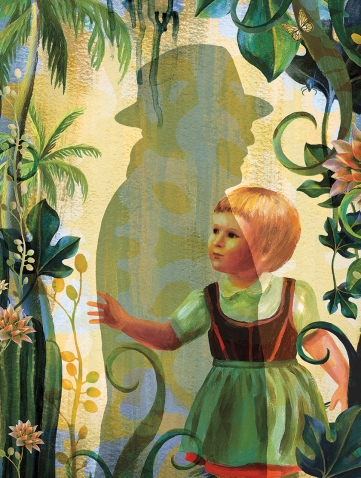Courage to Speak
I was deeply moved by “The Hidden Truth” by Julie Catterson Lindahl ’88 (spring ’17), as I am sure many other Wellesley readers were, and I look forward to buying her book about the research she so bravely undertook. My parents were on “the other side” from her grandparents (or grandfather only, perhaps).
My father was an NBC Radio war correspondent. He covered the Dieppe Raid, the campaign in North Africa, experienced the blitz in London, landed on Omaha Beach on D-Day, broadcast from Paris on Liberation Day, and then went on to Berlin. My mother stayed in London throughout the war, and I believe she was the only American correspondent’s wife to do that.
Now that I am into my eighth decade, I think often of those young people my parents were, and of course, like most people my age, wish I had asked a lot more questions than I ever did. I do know, though, that their values and choices continue to influence not only me, my brothers, and my sister, but all of our own children and grandchildren, as well.
It doesn’t take any courage at all for me to speak about them to the younger generations. Julie Lindahl’s case is different, and she is not only courageous, but wise to look for the truth and then to make it public, not only for her own children and their children, but for the rest of us, too. I believe, as she surely does, that what is hidden decays, and in so doing also diminishes us, but the truth will set us free. Many thanks to her and to Wellesley magazine for this gift.
Sara MacVane ’66, Bagnolet, France
Praise for ‘The Hidden Truth’
Julie Catterson Lindahl ’88 is one brave lady! First, because she persisted in finding records which must have been distressing, and second because she published her findings where everyone could see them (“The Hidden Truth,” spring ’17).
Also, to give additional praise where praise is due: to the College for awarding her the Stevens Traveling Fellowship; and to Wellesley magazine for publishing her story, which may cause discomfort to many.
Marian McCuiston Couch ’46, Winston-Salem, N.C.
Mamas in the City
I enjoyed “Mama in the City” by Jennifer Vanasco ’94 (spring ’17) and the personal memories it brought back.
Some things don’t change much, but there used to be an occasional glimpse of hope back in my day. In the fall of 1961 in New York City, I boarded a bus going down 5th Avenue. There was a bustle rustle of New York Times newspapers being raised up, usually folded in that how-one-folds-a-newspaper-for-crowded-subway and-bus-reading, but for now, spread open a bit to better assist the reader’s “inability” to see who was getting aboard. Behind those papers were very-well-dressed-for-Wall-Street-looking seated gentlemen.
The reason: There was a taxi strike.
I was quite obviously pregnant. Two women promptly offered me their seats; one said she was getting off in two stops, but I was taller than she and could hang on to the strap and pole near her for those two stops. Shortly after I did sit down, I was aware that the bus driver had pulled unusually close to the curb. With some struggle, on came a tiny old woman. The raised newspapers, which had been briefly lowered, flapped importantly back up again.
I offered her my seat, and she said, “Oh no, dearie. Just let me lean against your knees and I will hold onto the pole.”
In a minute or two, she gave me a big wink and said, in a stage whisper, “You know what my friend Emma said the other day? She said, ‘Maud, chivalry isn’t dead. It has just changed sexes!’”
Kitty Stinson Carleton ’59, Peterborough, N.H.
Minority Characters
As co-chair of Wellesley’s Experimental Theater some 50 years ago, I directed college stage productions of García Lorca’s La Casa de Bernarda Alba, and James Baldwin’s The Amen Corner. To my utter joy, Baldwin himself attended, then came backstage to tell me I had presented his play exactly as he envisioned it. I had unwittingly cast a relative of his in the star role!
It is thrilling that Kanika Vaish ’17 directed Guards at the Taj (“On Guards,” spring ’17), but it is inaccurate to state that shows featuring minority characters and/or set outside the United States are new for Wellesley.
Cheryl Wootton Black Brierton ’69, San Diego
Sensible Shoes
On your “Women Who Run” cover (winter ’17), I was happy to see a woman presented as a professional with briefcase and tailored dress, wearing flat shoes. Maybe it is time for an article stressing the physical harm women do to their bodies when they bind their feet with heels and pointed toes.
Anstiss Morrill ’59, Farmington Falls, Maine
Correction
Charlene Galarneau, assistant professor of women’s and gender studies, was inadvertently misquoted in “The Ethics of Health Care” (spring ’17). Regarding discussions of religion and how it shapes health systems and policy decisions, Galarneau said, “Often when we first discuss the works of an explicitly Christian author, students will acknowledge having had noticeable reactions while reading—from discomfort to dismissal to surprise to affirmation. The common assumption that religion is or can be only oppressive is challenged by our lively discussions of these authors’ ethics frameworks and students’ own diverse understandings and experiences.” Wellesley regrets the error.




